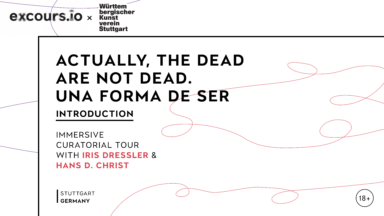Actually, the Dead Are Not Dead. Una forma de ser
The exhibition explores the interplay between celebration and political expression, rooted in the context of marginalized communities. Drawing inspiration from the Bergen Assembly 2019, this exhibition examines how festivities serve as platforms for social emancipation and self-determination, particularly within the Rom*nja, Flamenco, and Bohemian cultures since the 19th century. By interweaving historical and contemporary works, the exhibition highlights the transformative power of communal gatherings, where joy, rebellion, and artistic innovation intertwine. Una forma de ser invites visitors to reflect on the significance of togetherness, creativity, and resilience in the face of adversity.
Why should you watch this?
Una forma de ser offers a deeper understanding of the vital connections between celebration and social justice within marginalized communities. In a time when the world has faced unprecedented challenges like social distancing, the insights from an expert guide can illuminate the historical context and contemporary relevance of the works on display. These tours foster a greater appreciation for how communal gatherings can serve as acts of resistance and self-assertion, encouraging critical reflection on our own experiences of connection and separation. Additionally, the guided tour provides a unique opportunity to engage with the complexities of identity and representation that the exhibition addresses, enriching the viewer’s experience and sparking meaningful conversations about the role of art in shaping our understanding of community and resilience in today’s society.

In When I see the future, I close my eyes: Chapter II, Heba Y. Amin critically explores the intersection of colonialism, technology, and modern warfare, drawing attention to the lingering effects of these forces on contemporary society. Through installations, photography, and reconstructions, Amin revisits historical moments, such as early colonial photography and WWII landmines in Egypt, to highlight how visual and technological tools have been used to exert control and perpetuate violence. The exhibition asks us to reflect on how these past dynamics continue to shape narratives of power and oppression, urging us to confront the neocolonial tendencies of today’s technologies.
Why should you watch this?
This exhibition is essential for gaining a deeper understanding of how colonial histories and technological advancements continue to shape global power dynamics today. In a world increasingly dominated by digital surveillance, militarization, and the exploitation of resources, Heba Y. Amin’s works offer critical insights into how these tools are rooted in historical forms of oppression. The tour provides context to complex pieces that tackle everything from colonial photography to nuclear fallout, showing how these past events resonate with current issues like digital authoritarianism and neocolonialism. At a time when technology is both a tool for liberation and control, this exhibition is especially relevant, helping us reconsider the role of visual culture in framing our collective future.


